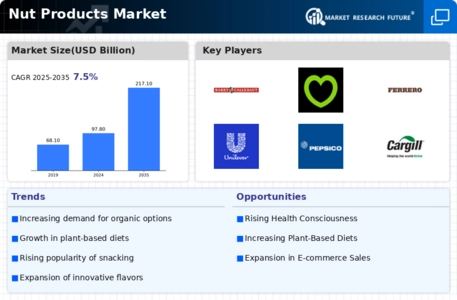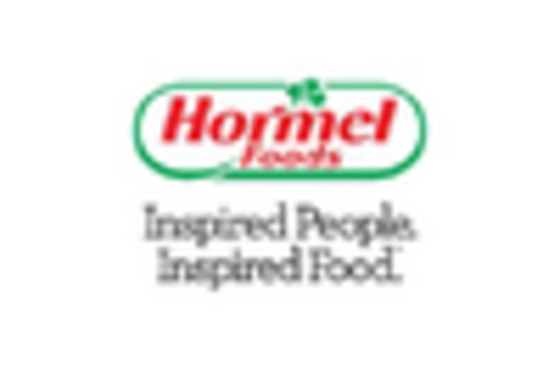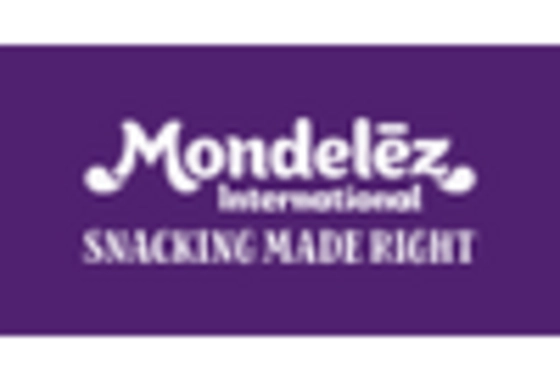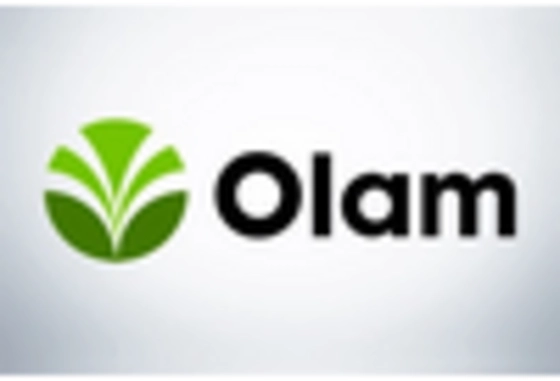Increased Snacking Trends
The Nut Products Market is benefiting from the rising trend of snacking, as consumers seek convenient and nutritious options. Nuts are often perceived as a healthy snack alternative, providing essential nutrients and energy. Recent statistics reveal that The Nut Products Market is expanding, with nuts being a preferred choice among health-conscious consumers. This trend is particularly evident among younger demographics, who are increasingly opting for on-the-go snacks that are both satisfying and nutritious. As the demand for healthy snacks continues to rise, the Nut Products Market is likely to see sustained growth, driven by innovative product offerings and marketing strategies.
Expansion of E-commerce Platforms
The Nut Products Market is experiencing a transformation due to the expansion of e-commerce platforms. As consumers increasingly turn to online shopping for convenience, the accessibility of nut products has improved significantly. E-commerce allows for a wider variety of products to be available to consumers, including specialty and organic nut options that may not be found in traditional retail settings. Recent trends indicate that online grocery sales are on the rise, with nuts being a popular category among health-conscious shoppers. This shift towards digital purchasing is likely to enhance the visibility and sales of nut products, further driving growth in the Nut Products Market.
Rising Demand for Plant-Based Proteins
The Nut Products Market is experiencing a notable increase in demand for plant-based proteins, driven by a growing consumer preference for healthier dietary options. As individuals become more health-conscious, they are increasingly seeking alternatives to animal proteins. Nuts, being rich in protein, healthy fats, and essential nutrients, are positioned favorably in this trend. Recent data indicates that the plant-based protein market is projected to grow significantly, with nuts playing a crucial role in this expansion. This shift towards plant-based diets not only supports health but also aligns with environmental sustainability goals, further propelling the Nut Products Market.
Growing Awareness of Nutritional Benefits
The Nut Products Market is witnessing a surge in consumer awareness regarding the nutritional benefits of nuts. Research has consistently highlighted the health advantages associated with nut consumption, including heart health, weight management, and improved metabolic function. This heightened awareness is influencing purchasing decisions, as consumers actively seek out products that contribute to their overall well-being. Data suggests that the health food market is expanding, with nuts being a key component of many health-focused diets. As educational initiatives and marketing campaigns continue to promote the benefits of nuts, the Nut Products Market is poised for further growth.
Innovations in Packaging and Product Formats
The Nut Products Market is witnessing innovations in packaging and product formats, which are enhancing consumer appeal and convenience. Companies are increasingly adopting resealable packaging, single-serving sizes, and eco-friendly materials to attract environmentally conscious consumers. These innovations not only improve the user experience but also cater to the growing demand for portion-controlled snacks. Recent market analysis indicates that innovative packaging solutions are becoming a key differentiator in the competitive landscape of the nut products sector. As brands continue to invest in creative packaging strategies, the Nut Products Market is likely to benefit from increased consumer engagement and sales.


















Leave a Comment